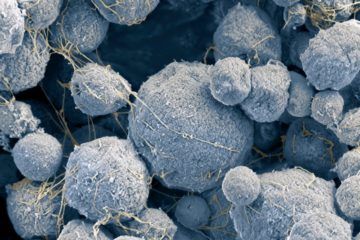Amber Dance in Nature:
 The Borg have landed — or, at least, researchers have discovered their counterparts here on Earth. Scientists analysing samples from muddy sites in the western United States have found novel DNA structures that seem to scavenge and ‘assimilate’ genes from microorganisms in their environment, much like the fictional Star Trek ‘Borg’ aliens who assimilate the knowledge and technology of other species. These extra-long DNA strands, which the scientists named in honour of the aliens, join a diverse collection of genetic structures — circular plasmids, for example — known as extrachromosomal elements (ECEs). Most microbes have one or two chromosomes that encode their primary genetic blueprint. But they can host, and often share between them, many distinct ECEs. These carry non-essential but useful genes, such as those for antibiotic resistance.
The Borg have landed — or, at least, researchers have discovered their counterparts here on Earth. Scientists analysing samples from muddy sites in the western United States have found novel DNA structures that seem to scavenge and ‘assimilate’ genes from microorganisms in their environment, much like the fictional Star Trek ‘Borg’ aliens who assimilate the knowledge and technology of other species. These extra-long DNA strands, which the scientists named in honour of the aliens, join a diverse collection of genetic structures — circular plasmids, for example — known as extrachromosomal elements (ECEs). Most microbes have one or two chromosomes that encode their primary genetic blueprint. But they can host, and often share between them, many distinct ECEs. These carry non-essential but useful genes, such as those for antibiotic resistance.
Borgs are a previously unknown, unique and “absolutely fascinating” type of ECE, says Jill Banfield, a geomicrobiologist at the University of California, Berkeley. She and her colleagues describe their discovery of the structures in a preprint posted to the server bioRxiv1. The work is yet to be peer-reviewed.
Unlike anything seen before
Borgs are DNA structures “not like any that’s been seen before”, says Brett Baker, a microbiologist at the University of Texas at Austin. Other scientists agree that the find is exciting, but have questioned whether Borgs really are unique, noting similarities between them and other large ECEs. In recent years “people have become used to surprises in the field of ECEs”, says Huang Li, a microbiologist at the Chinese Academy of Sciences in Beijing. “However, the discovery of Borgs, which undoubtedly enriches the concept of ECEs, has fascinated many in the field.”
More here.
